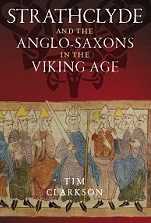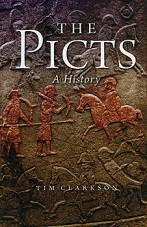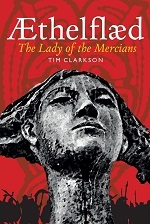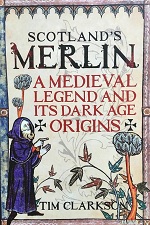
Pictish warriors on a stone at Aberlemno in Angus (Photo © B Keeling)
The sculptured stones at Govan Old Parish Church are sometimes inaccurately described as ‘Pictish’, probably because their carvings share similarities with those we see on genuine Pictish stones in Perthshire and elsewhere. It is certainly true that the Govan stonemasons borrowed ideas from their Pictish counterparts, but the territory in which they lived was not part of Pictland, nor were its inhabitants Picts. At the time when the stones were carved (9th to 11th centuries AD) Govan was the royal capital of the
kingdom of Strathclyde, the last surviving realm of the
Cumbri or North Britons.
Before the Romans invaded Britain in the 1st century AD, the ancestors of the Cumbri and the ancestors of the Picts were members of an indigenous population that inhabited the whole of Britain. All of these natives were known to the Roman invaders as ‘Britons’. Among their most famous representatives in Roman times were the fierce Queen Boudica and the rebellious warlord Caractacus. But 400 years of Roman military occupation left its mark and, when Rome withdrew in the early 5th century, these ‘Ancient Britons’ were no longer seen as one people. A large proportion of those in the far north were now referred to as Picti, ‘Picts’, which probably means ‘The Painted Ones’. The rest continued to call themselves ‘Britons’ but began also to use another term, Combrogi, which later became Cymry and which means ‘fellow countrymen’. The present-day Welsh – last modern remnant of the native Britons – still use Cymry when referring to themselves in their own language, and their country is Cymru (pronounced Cum-ree). Their former fellow-countrymen in the north used a similar term, Cumbri, but little trace of them survives today in their ancient territories in southern Scotland. However, their name lives on in the English county of Cumbria which was the southernmost province of the kingdom of Strathclyde a thousand years ago.
The people who commissioned the Govan stones, and the craftsmen who carved them, were therefore not Picts but Cumbri or North Britons. They spoke a language that we now usually refer to as Cumbric, basically a northern dialect of Welsh. Cumbric and Welsh, like Gaelic, were members of the Celtic language family but belonged to a separate branch known today as Brittonic or Brythonic. At one time, the Picts also spoke a Brittonic language, but around AD 800 they began to adopt the Gaelic speech of the Scots of Argyll and, by c.900, they were even starting to call themselves ‘Scots’. Their country – ‘Pictland’ – became known as Alba, still used today as the Gaelic name for Scotland.
So, the Govanites of 1000 years ago were not Picts. Nor can the carved stones in the ancient royal church be accurately described as ‘Pictish’. In fact, we know of only two instances when Picts were seen at Govan. The first was in 756, when a combined army of Picts and Northumbrian English attacked the Britons of the Clyde. The invaders besieged the great Rock of Dumbarton (Dun Breatann, ‘Fortress of the Britons’) and forced its king to capitulate. It seems that the Anglo-Pictish army assembled at Govan to receive the formal surrender. The second instance came in the following century, after a Viking raid on Dumbarton in 870 prompted the royal dynasty of the Britons to transfer the seat of royal power to Govan. A king called Rhun (prounounced ‘Rhinn’) was probably the first to rule from the new centre. His queen, whose name we do not know, was a Pict, a daughter of the Pictish king Cináed mac Ailpín (‘Kenneth MacAlpin’). She almost certainly worshipped in the church at Govan and was probably buried in the kirkyard beneath a finely carved tombstone.
* * * * * * *
Notes
The ‘Welshness’ of the kingdom of the Clyde Britons is not in doubt. As well as plenty of evidence in the form of place-names and the names of kings, we have written testimony from the time. To their neighbours in Northumbria, the Govanites of a thousand years ago were Straecledwealas, ‘Strathclyde Welsh’, an Old English term found in the 10th-century Anglo-Saxon Chronicle.
Although I here describe the present-day Welsh as the ‘last modern remnant’ of the native Britons, this is not meant to exclude those people in Cornwall who proudly claim native British ancestry. It is, however, meant to apply to mainland Britain alone, and therefore excludes the Bretons (whose ancestors migrated to Brittany in the 5th century AD).
I’ve looked at the ‘ethnicity’ and cultural identity of early medieval Strathclyde in an earlier blogpost: People, Place & Memory. A fuller treatment of the topic can be found in my book The Men of the North: the Britons of Southern Scotland.
* * * * * * *
Read Full Post »













